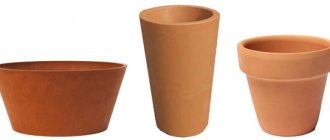Since in nature, wood sorrel lives in a wide variety of regions and conditions, these small, herbaceous plants are welcome guests in gardens and on indoor window sills from the north of Europe and Russia to the south of the African and American continents.
Description and features of wood sorrel oxalis
Oxalis greens, some varieties of which are used for food, have a pleasant sour taste. This is due to the unusually high content of oxalic acid. And since the feature was noticed quite a long time ago, it determined the name of the entire genus.
Oxalis has been known as a garden plant for more than three hundred years. During this time, some varieties acquired popular names.
This nickname was given to Depp's oxalis, due to its resemblance to a "lucky" four-leaf clover. The four-leaf sour, in the photo, or the flower of family happiness is also called the iron cross due to the contrasting pattern on the leaves.
The figured leaves of Oxalis oxalis in most varieties are divided into three or four parts; less commonly there are plants that have five or nine such parts on the leaves. But there are also interesting exceptions.
For example, the Oxalis palmifrons flower shown in the photo has leaves consisting of 15–19 lobes, which gives the rosette a unique, futuristic appearance.
Oxalis leaves, held on long petioles, can be not only green. It is not uncommon to see purple, violet, orange-red or variegated coloring of the leaf blades.
Oxalis flowers, in the photo, do not stand out in size, but they are very diverse, and sometimes even unique. The corollas are simple or, which is much less common, double in shape, can be single or collected in sparse inflorescences. At the base of the corolla are five smooth petals, the colors of which would make a rainbow envious.
The range of oxalis flowers includes all shades of lilac, yellow, pink, red and cream. In many species, the flowers are completely white or decorated with thin veins of purple or pink.
Like the leaves of the sorrel, its flowers are very sensitive. In many varieties, the corollas close not only at night, but also when the weather worsens or even when touched. In the same cases, the leaves are simply folded.
Humidity and watering
Oxalis does not have any special requirements for humidity. Spraying the leaves is allowed only in the warm season. Moreover, the water must be settled or boiled.
The plant loves abundant watering. But it is necessary to ensure that the water in the soil does not stagnate - this can lead to rotting. By winter, watering volumes are reduced.
Oxalis triangularis
Oxalis began to be grown as an indoor crop only in the last century. Flower growers were attracted by the opportunity to decorate a windowsill with a spectacular plant from distant countries with virtually no hassle. A striking example of this is the purple or triangular sorrel, once exported from Brazil.
The name of the species is due to the structure of the leaves and their color. Most small triangular sorrel plants are striking with a thick purple hue, and on the leaf blades, in addition, spots or streaks of a different color are clearly visible.
But unpretentious indoor culture is not only purple. Green triangular sorrel is no less elegant and decorative. Against the background of large three-lobed foliage, small white flowers stand out, readily opening buds all year round.
Location and lighting
Oxalis loves bright, diffused lighting. It is optimal to place a pot with a plant on a window facing west or east. If this is not possible, then you can place the plant on a southern windowsill.
But you should definitely take care of shading. Also try not to create drafts - they can negatively affect the well-being of oxalis.
Four leaf sorrel (Oxalis tetraphylla)
The Mexican species of wood sorrel in Europe has become one of the most popular as a garden plant. Quatrefoil oxalis has a second name - Depp's oxalis. The culture is easily recognizable due to its four-lobed leaves with a brown, reddish or purple pattern on the leaf blades.
The perennial four-leaf sorrel reproduces by seeds and daughter scaly bulbs formed in the fall, which can be eaten. The flowers of this species are reddish-pink, simple, with wide, rounded petals.
Transfer
Young flowers need annual replanting. After four years, the step between plant transplants should be increased to two years. It is better to replant sorrel in the spring. A drainage system is required.
Oxalis is a rather beautiful and at the same time undemanding flower. She will decorate any flower bed. In addition, pots with plants can be used to decorate loggias and balconies.
Common sorrel (Oxalis acetosella)
The native European species can be seen in coniferous and deciduous forests, as well as in gardens, where the common wood sorrel delights with white or lilac-pink flowers and light green three-lobed foliage. This perennial, unpretentious species blooms in spring and early summer.
The peculiarity of the plant is the presence of ordinary oxalis flowers, shown in the photo, which open above the surface of the ground, and cleistogamous ones, hidden from view under fallen pine needles and foliage. If ordinary corollas attract insects, then very small, 3 mm in diameter, closed flowers are self-pollinating.
Rare botanical species of indoor oxalis
These plants are rarely found on the market; they can be bought or exchanged from private collectors or in botanical garden shops.
Palmifrons (Oxalis palmifrons)
It is distinguished by its unusual appearance. It looks like a miniature palm tree, although it is not related to them. The rosette is dense and symmetrical. Fleshy reddish-green petioles bear green leaves consisting of 16-19 lobes. It blooms in early spring, at the beginning of its growing season, with pinkish-white flowers.
Yellowish (Oxalis luteola)
Forms low (up to 10 cm) curtains. Both flowers and leaves are decorative. Leaf blade of 3 lobes, round, dark green with purple speckled pattern. The flowers are large, 4-5 cm in diameter, yellow and fragrant. One flower lives from 7-10 days.
Oxalis versicolor
This plant cannot be confused with other representatives of the numerous code Oxalis. Thanks to its spectacularly curled white petals with a bright red border, the multicolored sorrel is called “Christmas candy” in a number of countries. Indeed, the buds are very reminiscent of traditional licorice candies and amazingly decorate a very small plant.
Variegated sorrel stands out not only for its bright flowering, but also for its very small, almost needle-like foliage. Today, the species indigenous to southern Africa is actively grown both as a houseplant and greenhouse plant, and in gardens in warm regions.
Home care
The unpretentious plant does not require special conditions when grown indoors. Lucky clover needs diffused lighting (at least 8 hours a day) and moderate watering.
The culture prefers loose, fertile, slightly acidic soil. In this case, there should be a hole in the bottom of the pot (for drainage of excess water) and a good drainage layer (2-3 cm).
The plant will feel comfortable at normal air humidity and a temperature of 18-25 °C. In the summer season, the flower can be taken out into the yard, garden or onto the balcony, not forgetting to shade it from direct rays of the sun.
In winter, the frequency of watering is halved , because a dormant period begins, during which some varieties (species) of oxalis even shed their leaves.
The rapidly growing sorrel is transplanted into a new, larger container as necessary. This procedure is used both for rejuvenating a home flower and for propagation by dividing the bush once every 2-3 years.
A delicate and very effective crop is easy to grow both in the garden and at home. Proper care and the use of the rejuvenation method can extend the life of the lucky clover indefinitely.
Oxalis tuberosa
In the long line of existing varieties, tuberous sorrel or, as the plant is called in its homeland, South America, oca, is not an ornamental, but an agricultural crop.
It is actively grown not for its foliage or flowers, but for its edible starchy tubers, which in terms of nutritional value and yield rival the potatoes more familiar to Russians.
Depending on the variety of tuberous oxalis grown, farmers in the Central American region harvest tubers that are white, yellowish, pink or purple. After collection, they are stored dried or eaten after all available types of culinary processing.
Indoor views
Classification by leaf color
Oxalis (O. triangularis)
The most famous of the species grown in indoor floriculture, its other name is Regnella (oxalis regnellii). The leaves are triangular in shape, purple-violet, on tall thin petioles. The color of the leaf plate is two-color, bright purple in the middle, darker towards the edges of the leaf.
Triangular
Triangular moth
K. triangular variety Cupido Triangular variety Silverado
The size of the plant is 15-20 cm. From a distance, the flower creates the effect of fluttering butterflies. The flowers are purple, small (no more than 3 cm in diameter), collected in inflorescences of 3-4 pieces. Blooms from February to August. When the plant is large, many of its leaves hang from the pot. In indoor gardening it is used as an hanging plant.
Varieties:
- Papilionacea (Oxalis triangularis subsp.papilionacea) has soft green leaves, over which numerous white flowers appear in spring and summer.
- Cupido has a strong contrast: very dark leaves, violet-black and bright purple flowers;
- Silverado - green leaves with silver speckles, white flowers.
Succulent (Oxalis succulenta)
Tall, up to 35 cm, plant. It has a bizarre appearance - thickened short petioles bear small trifoliate leaves at their ends. The color of the petioles is olive-gray, covered with a waxy coating.
The leaves are light green or bronze-green, depending on the variety. This type of sorrel can remain without water for a short time; moisture is stored in the fleshy petioles. It blooms with small yellow flowers collected in sparse inflorescences.
Nine-leaved (O. enneaphylla)
A stemless creeping herbaceous perennial. It forms a dense turf, 8-10 cm in size. The leaves on pubescent petioles are palmate, consist of 9 lobes, are often in a semi-folded state, and are bluish-green in color. From a distance, the leaf resembles a green double flower.
Nine-leaved variety Minitifolia
Nine-leaved variety Alba
Nine-leaved variety Sheffield Swan
It blooms in May-July with fragrant large funnel-shaped flowers (diameter 2-3 cm). The color varies depending on the variety:
- Alba has white funnel-shaped flowers with a greenish-yellow center;
- Minutifolia is a miniature copy of K. nine-leaved, 5-8 cm in size, with large pink flowers;
- Sheffield Swan - large white flowers against grey-green foliage.
In indoor gardening of winter gardens, greenhouses are used as a ground cover plant, decorating the surface of pots with large specimens.
Hedysaroides (Oxalis hedysaroides)
Subshrub, grows up to 30 cm with three-lobed leaves sitting on short, up to 4 cm, petioles. The color of the leaf blade is two-color - green with brown spots. The flowers are bright yellow, on brown stalks.
Variety Rubra - leaf color is dark purple.
Ortgies (Oxalis ortgiesii)
An adult plant looks like a miniature “tree”. Leaves up to 7 cm, trifoliate, sit on long, slightly drooping petioles. Depending on the lighting, the foliage may be green or brownish-red. The inflorescences consist of 5-7 small yellow flowers.
Species valued for flower color:
Variegated (Oxalis versicolor)
The species is low, up to 20 cm, compact with trifoliate small needle-like leaves. Flowers immediately attract attention. Based on their color, gardeners often compare them to Christmas candy; they have a second name - caramel flower.
Buds of K. variegated
K. variegated variety Golden Cape
Bright white funnel-shaped flowers with a red edge around the edge of each petal create a striped effect. The plant is very thermophilic. Variety "Golden Cape" The flowers are bright yellow with a red border along the edge. From a distance, the stripes appear orange. The leaves are medium sized, bright green.
Oxalis Obtuza
Forms a compact miniature rosette, 8-10 cm high. The leaf blade is slightly pubescent or smooth, green. Flowers rise above the foliage on thin petioles. Valued for its ease of care and many varieties with peach, yellow and white flowers.
Variety Lady Elizabeth - blooms with delicate whitish-lilac funnel-shaped flowers with a greenish-yellow center.
K. Obtuza
K. Obtuza variety Lady Elizabeth
Growing indoors
To grow oxalis indoors, the pot is filled with a soil composition that includes compost and leaf soil, as well as sand. It is kept in a well-lit place, the best would be sunny windows. It is only important to protect the plant from the heat during the midday hours.
For full growth and development, plants maintain a temperature regime of 22-24 degrees. Water regularly, but moderately. It should dry out between waterings.
Every month, oxalis will respond positively to adequate nutrition in the form of fertilizers for indoor flowers. They are used according to the instructions indicated on the packaging. Feed the plant once every two weeks. In the autumn and winter periods, feeding is stopped, and along with it, watering. At this time, the pot is placed in a dark and cool place, where it remains for about three months. Oxalis is transplanted into another container once every two years.
Planting in open ground
After acquiring four-leaf oxalis bulbs, they must be planted immediately. If you cannot do this, then you need to place them in the refrigerator. Keep there on the bottom shelf until planting in paper.
A place for planting is selected that is well lit by the sun, since this species needs it most. There will be no growth in the shade. The soil should be sandy or loamy. Acid and neutral are allowed. But always with good drainage properties. The plant does not grow well in dry and heavy soil.
The bulbs are planted at intervals of 10 centimeters to a depth of no more than 5 centimeters. The bulbs are not frost-resistant. If the air temperature drops below 12 degrees below zero, they freeze out. Therefore, they are dug up for the winter in late autumn. Store in a cool place, protected from winter frosts. In the spring they are planted back into the ground. If your climatic conditions have warm winters, then the wood sorrel is left to overwinter in the ground. Be sure to mulch it with a layer of 5 centimeters.
Garden varieties
Classification by type and color of flower
Frost-resistant species or plants that require light shelter are suitable for growing in open ground conditions. The species that are chosen for landscaping flower beds and rock gardens in landscaping gardens and parks are interesting for their varied shape and color of flowers.
Ferruginous (O. adenophylla)
to Ferruginous
K nasturtium
To the giant Atacama Desert in nature
Winter-hardy and unpretentious, up to 10 cm high. The flowers are pale pink with a crimson spot in the middle of the flower and thin crimson veins. The leaf color is silvery-green. It is used as a ground cover in decorating alpine slides, retaining walls and as a low border.
Nasturtium (Oxalis tropaeoloides)
A striking contrast of yellow flowers and dark purple foliage. Forms a low bush up to 20 cm. Shade-tolerant and unpretentious, forms a dense carpet, suitable as an alternative to a lawn in a shady garden, decorating tree trunks. Its rapid growth must be taken into account and limited.
Giant (Oxalis gigantea)
The largest species. It is striking in its size - it produces straight, powerful shoots up to 2 m in height. The leaves are small, heart-shaped, creating the impression of green lace, above which large yellow flowers up to 2 cm rise.
Oxalis Deppei, Deppe (O.deppei) or four-leaved
The leaf blade is large, has 3-4 lobes, green and a cross-shaped purple spot characteristic of the species in the center of the leaf blade. Each rosette has 4-7 leaves. The flowers are small, reddish-purple with a yellow throat.
Variety "Iron Cross" (O. tetraphylla Iron Cross ) is a variety bred from Deppe's wood sorrel. The flowers are pinkish-red, bell-shaped on thin long stalks.
Poor (Oxalis inops)
K red variety Pink Dream K poor
to Depp's Iron Cross variety
The leaf shape is trifoliate, the color is bright green. It blooms in July-August with pink flowers with a yellow center, the petals of which are slightly bent downwards.
Red (Oxalis rubra)
Tall sorrel - plant height up to 40 cm. The leaf blade is trifoliate, green. There are varieties with pink and red flowers.
Variety "Pink Dream". Large pink flowers (3-4 cm) and green trifoliate leaves with rounded edges.
Interesting fact! In South America, sweet sorrel (Oxalis tuberosa) is grown to produce a crop of sweet tubers that compete with the sweet potato.
The classification of plants into indoor and garden species is arbitrary and depends on the region where they are going to grow it. Most species are native to South Africa and America and prefer warm climates and sunny locations. In indoor conditions, heat-loving beauties will live all year round; in open ground, some species will need dry shelter for the winter.
Landing technology
It is preferable to plant in the spring and summer. Accordingly, at the same time, a young seedling should be purchased for planting. So, first of all, prepare high-quality soil, it should consist of the following components:
- turf;
- leaf soil;
- peat;
- humus;
- fine-grained river sand.
All components are taken in equal proportions, and after thorough mixing, a light, loose soil with a neutral environment is obtained. A layer of drainage consisting of expanded clay or pebbles is poured onto the bottom of the pot (well-crushed brick is also suitable). Prepared soil is poured on top. The plant is transplanted into a container for continuous growth.
If planting is carried out in a garden plot, then you should wait for the desired air temperature: the optimal time for planting is the end of spring. The holes must be located at a distance of at least 10 cm from each other. Young seedlings are planted there and covered with soil. Afterwards the soil is thoroughly watered.
Reproduction methods
This process is carried out mainly by seeds or division of the rhizome. In the first case, seedlings are sowed in early spring by spreading them over the soil surface. The area/container with the sown seeds should be covered with a special material/glass to create the required humidity. Sowing should be done well and, most importantly, ventilated daily, and the soil should be moistened with a spray bottle. If all conditions are met, after 2-4 weeks the first shoots should appear on the surface of the soil.
The division method is considered a much faster, simpler and more effective way of propagating Iron Cross. All you need is a plant tuber, which can either be purchased at a specialty store or cut from the mother root during the transplanting process.
The tubers are planted in groups of 2-3 in one pot, lightly sprinkled with soil and left in a cool, dark place. The soil should be moistened periodically. When the first shoots appear, the containers with young plants are immediately moved to a brighter place.
Young bush











